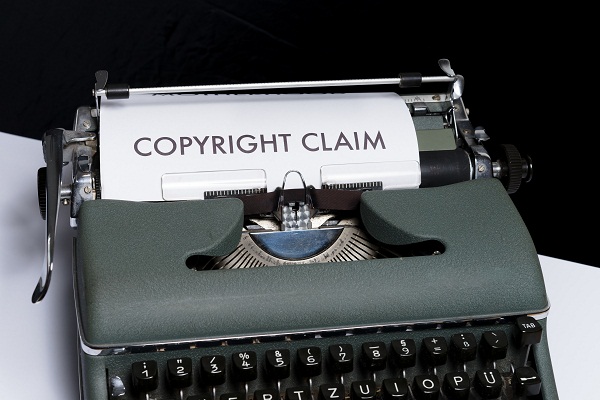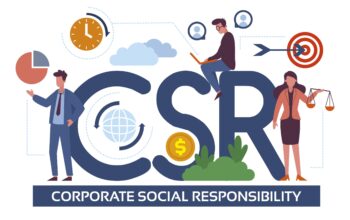Patent law and its Importance
This article is written to explain everything about patent law its importance for business growth, their types and what are the things required to get a patent, the patent application process, and International patent law.
Understanding the Basics of Patent Law
Patent law is a legal framework that governs the protection and enforcement of new inventions and technological advancements. It provides inventors with exclusive rights to their creations, granting them the ability to prevent others from making, using, or selling their inventions without permission. Patents play a crucial role in stimulating innovation, fostering economic growth, and encouraging businesses to invest in research and development.
Table of Contents
Importance of Patent for Business Growth
In today’s competitive market, patents have become a strategic asset for businesses. They not only offer protection against competitors but also help businesses establish a unique selling proposition. Patents enable companies to attract investors, secure funding, and generate revenue through licensing or selling their patented technologies. In essence, patents can enhance a company’s market position, foster growth and expansion, and provide a significant advantage over rivals.
Types of Patents
Utility Patent
Utility patents are the most common type of patents and cover new and useful inventions, processes, machines, or compositions of matter. They protect how an invention works or is used and typically have a term of 20 years from the date of filing.
Design Patents
Design patents focus on the ornamental or aesthetic aspects of an invention rather than its functionality. They protect the unique visual appearance of a product and can be granted for original, non-functional designs. Design patents usually have a term of 15 years from the date of grant.
Plant Patents
Plant patents are granted for new and distinct varieties of plants that are asexually reproduced. These patents protect the inventor’s right to exclude others from reproducing, selling, or using the patented plant for a period of 20 years.
Meet the requirements for patentability
Novelty and Prior Art
To obtain a patent, an invention must be novel, meaning it must be different from anything that has been publicly disclosed before. There should be no prior art that describes or anticipates the invention. Prior art includes any publicly available information, such as previous patents, scientific articles, and public demonstrations.
Inventive Step or Non-Obviousness
In addition to being novel, an invention must also involve an inventive step or non-obviousness. This means that the invention must not be an obvious improvement or combination of existing knowledge or technology. It should represent a significant leap forward and display an unexpected and inventive solution to a problem.
Industrial Applicability
Another requirement for patentability is industrial applicability. The invention must have a practical use or be capable of being made or used in any kind of industry. It should possess a useful function and be applicable in fields such as technology, manufacturing, or biotechnology.
Disclosure and Enablement
For a patent to be granted, the inventor must provide a clear and complete disclosure of the invention in the patent application. The disclosure should be sufficient to enable a person skilled in the relevant field to reproduce the invention without undue experimentation. This requirement ensures that patented inventions contribute to the body of knowledge and can be effectively utilized by others.
Read More : how to file patent in India
Patent search and prior art analysis
Conducting a Patent Search
Before filing a patent application, it is essential to conduct a thorough patent search to assess the novelty and patentability of the invention. A patent search involves examining existing patents, patent applications, and other relevant literature to identify prior art that may impact the patentability of the invention. This search can be done through various databases and tools, both online and offline.
Analyzing Prior Art
Once the relevant prior art has been identified, it is crucial to analyze its relevance to the invention. This analysis helps determine whether the invention is truly novel and non-obvious in light of the existing knowledge and technology. It also helps identify potential challenges or objections that may arise during the patent examination process.
The role of patent databases and tools
Patent databases and tools play a vital role in conducting a comprehensive patent search and analyzing prior art. These resources provide access to a vast collection of patents and patent-related documents, enabling inventors and patent professionals to evaluate the patentability of an invention more effectively. Some popular patent databases and tools include the United States Patent and Trademark Office (USPTO) database, the European Patent Office’s Espacenet, and commercial databases such as PatBase and Derwent Innovation.
The patent application process
Drafting a Patent Application
Once the invention has been thoroughly researched and deemed patentable, the next step is to draft a patent application. This process involves preparing a detailed description of the invention, including its technical specifications, functionality, and potential applications. Patent applications also require the inclusion of claims, which define the scope of the invention and the exclusive rights sought by the inventor.
Filing Strategies and Timing Considerations
When filing a patent application, it is crucial to consider various strategies and timing considerations. For example, inventors may choose to file a provisional patent application to establish an early filing date and buy additional time for further development and refinement of the invention. Additionally, inventors should be mindful of filing deadlines to ensure they do not lose their rights to the invention due to delays or missed timelines.
Working with Patent Attorneys or Agents
Navigating the patent application process can be complex, and it often requires the expertise of patent attorneys or agents. These professionals specialize in patent law and can provide valuable guidance and assistance throughout the application process. They can help draft the application, conduct prior art searches, respond to office actions, and navigate any legal challenges that may arise.
International patent law
Understanding International Patent Systems
In a global marketplace, securing international patent protection is essential for businesses seeking to expand their reach beyond domestic borders. Various international patent systems and treaties, such as the Patent Cooperation Treaty (PCT) and the European Patent Convention (EPC), facilitate the process of obtaining patent protection in multiple countries. Understanding these systems and their requirements is crucial for businesses aiming to protect their inventions worldwide.
Filing Patent Applications Abroad
To obtain patent protection in foreign countries, businesses typically need to file separate patent applications in each desired jurisdiction. These applications must comply with the specific requirements and procedures of each country or regional patent office. Working with patent professionals who specialize in international patent law can help streamline the process and ensure compliance with each jurisdiction’s unique regulations.
The Importance of Patent Cooperation Treaty (PCT)
The Patent Cooperation Treaty (PCT) is an international treaty that simplifies the process of filing patent applications in multiple countries. It allows inventors to file a single international patent application, known as a PCT application, which serves as a placeholder for seeking patent protection in various countries. By filing a PCT application, inventors can secure an early priority date and gain additional time to decide which countries they wish to pursue patent protection in.
Patent examination and prosecution
Overview of Patent Examination Process
After a patent application is filed, it undergoes a thorough examination by the patent office to assess its compliance with the patentability requirements. The examination process involves reviewing the application’s technical content, prior art, and the claims made by the inventor. The patent office may issue office actions, which are formal communications that outline any objections, rejections, or requests for modifications. Applicants must respond to these office actions promptly and provide compelling arguments or amendments to overcome any objections raised.
Responding to Office Actions
When responding to office actions, it is vital to address each matter raised by the patent office thoroughly. This may involve presenting additional evidence, clarifying technical aspects, or amending the claims to ensure compliance with patentability criteria. Careful and strategic responses increase the chances of obtaining a favorable outcome and ultimately securing the patent.
Navigating the Appeals Process
If an application faces repeated rejections or objections that cannot be resolved through the examination process, inventors often have the option to appeal the decision. Navigating the appeals process requires expertise in patent law and a comprehensive understanding of the patent application’s strengths and weaknesses. Patent attorneys or agents can provide valuable guidance and representation throughout this process.
Patent Enforcement and Litigation
Monitoring and Identifying Infringement
Once a patent is granted, it is essential to monitor the market for potential infringement of the patented technology. This involves staying vigilant and actively searching for any unauthorized use or sale of the patented invention by competitors. By promptly identifying and addressing infringement, businesses can protect their rights and preserve the economic value of their patented technologies.
Strategies for Protecting Your Patents
To protect patents from infringement, businesses can employ various strategies. These may include sending cease-and-desist letters, negotiating license agreements, or pursuing legal action through litigation. Choosing the appropriate strategy depends on the specific circumstances and the desired outcome for the patented technology.
Patent Litigation and Dispute Resolution
In case of patent disputes, litigation or legal action may become necessary to resolve conflicts and protect patent rights. Patent litigation involves filing a lawsuit in a court of law, which initiates a formal legal process to determine the validity and infringement of the patent. Alternative dispute resolution methods, such as mediation or arbitration, can offer more efficient and cost-effective means of resolving patent disputes outside of the courtroom.
Patent Commercialization and Monetization
Licensing and Assignment of Patents
A powerful way to monetize patents is through licensing agreements or assignments. Licensing allows businesses to grant others the right to use their patented technology in exchange for royalties or licensing fees. Assignments, on the other hand, involve the complete transfer of ownership of the patent to another entity. Both licensing and assignment can generate revenue streams, enhance market presence, and create collaborative opportunities in the industry.
Patent Portfolio Management
For businesses with multiple patents, efficient patent portfolio management is crucial. This involves actively monitoring, analyzing, and strategizing the use of patents to maximize their value and align them with the overall business objectives. Portfolio management helps identify opportunities for licensing, potential risks of infringement, and areas for further innovation and research.
Leveraging Patents for Business Success
Utilizing patents strategically can lead to business success by providing a competitive edge, attracting investors, and facilitating collaborations. Patents can enhance a company’s reputation as an industry leader and innovation driver. By leveraging the exclusive rights conferred by patents, businesses can safeguard their innovations, differentiate their offerings, and build a strong foundation for growth and profitability.
Frequently Asked Questions
Q: What is patent law?
As: Patent law is a branch of intellectual property law that grants inventors exclusive rights to their inventions. It provides legal protection for new inventions, processes, designs, or technological advancements, preventing others from making, using, or selling the patented invention without permission.
Q: How do patents work?
As: Patents work by granting inventors a limited monopoly over their inventions for a specified period. In exchange for disclosing their invention to the public, inventors are granted exclusive rights, allowing them to control how their invention is used, manufactured, or commercialized. Patents provide legal protection, enabling inventors to enforce their rights and seek remedies against infringement.
Q: What can be patented?
As: In general, inventions that are novel, non-obvious, and have utility can be patented. This includes new and useful processes, machines, compositions of matter, and improvements thereof. However, certain subject matters, such as abstract ideas, laws of nature, and natural phenomena, may not be eligible for patent protection.
Q: How long does a patent last?
As: The duration of a patent varies depending on the type of patent and the filing date. Utility patents, which cover new processes, machines, and compositions of matter, generally last for 20 years from the filing date. Design patents, which protect ornamental designs for an article, last for 15 years from the date of grant. It’s important to note that maintenance fees may need to be paid to keep the patent in force.
Q: What are the benefits of obtaining a patent?
As: Obtaining a patent provides several benefits to inventors and innovators. It grants exclusive rights, allowing inventors to commercialize their invention and potentially gain a competitive advantage in the market. Patents also encourage innovation by providing inventors with legal protection, recognition, and the ability to license or sell their invention.
Q: How can I apply for a patent?
As: To apply for a patent, inventors need to file a patent application with the relevant patent office, such as the United States Patent and Trademark Office (USPTO). The application typically includes a detailed description of the invention, drawings (if applicable), and claims that define the scope of the invention. It is advisable to consult with a patent attorney or agent to navigate the complex application process.
Q: Can I patent software or business methods?
As: Software and business methods can be patented under certain conditions. They must meet the criteria of being novel, non-obvious, and having utility. However, patent eligibility for software and business methods can be subject to specific legal requirements and limitations, and it is advisable to consult with a patent professional to determine the potential for patent protection in these areas.
Q: What is the difference between a provisional patent application and a non-provisional patent application?
As: A provisional patent application is a temporary and less formal filing that establishes an early filing date for an invention. It provides a one-year period during which the inventor can further develop the invention and file a non-provisional patent application. A non-provisional patent application is a full and formal application that is examined by the patent office to determine the patentability of the invention.
Keynote
Patent law can provide great value and increased returns to individuals and corporations on the investment made in developing new technology.
For a consultation or any assistance related to Corporate Law like merger and acquisition, expansion of business, employment, and labour law and law associated with the corporate.
Connect with Adv. Anupam Agarwal. Adv. Anupam Agarwal who has quite 18 years of experience in variabilities of Corporate law.
- 13 July 2023
- Written By Archana Hayaran
- Associate Client Relationship
- Review By: Advocate Anupam Agrawal





Thanks for the nice post, it helped me to learn the skills and acquire the knowledge.